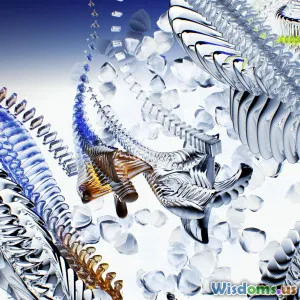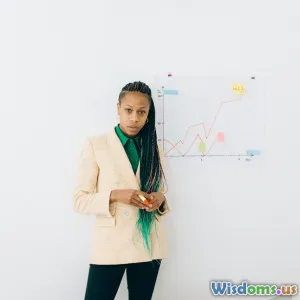
Innovative Techniques for Graphic Designers
7 min read Discover cutting-edge techniques transforming graphic design, boosting creativity and modernizing visual storytelling. (0 Reviews)
Innovative Techniques for Graphic Designers
Graphic design has always been at the intersection of art and technology. With rapid advancements altering how we create and consume visual content, graphic designers must evolve by embracing innovative techniques to stay ahead in this dynamic field. Imagine blending artificial intelligence with your creative process or crafting immersive 3D experiences that captivate audiences in remarkable ways. These innovations don’t just enhance aesthetics; they redefine creativity itself.
In this article, we delve deep into some of the most groundbreaking techniques transforming graphic design today. Whether you’re a seasoned professional or an aspiring artist, understanding these methods will empower you to push your creative boundaries and produce work that resonates in a saturated visual world.
1. Harnessing Artificial Intelligence (AI) for Creativity
Artificial intelligence is no longer a futuristic concept—it's becoming a vital tool in the graphic designer’s arsenal. AI-driven applications can automate repetitive tasks, offer design suggestions, and even generate original artwork.
AI Tools Revolutionizing Workflows
Tools like Adobe Sensei leverage machine learning to expedite processes such as image retouching, color matching, and typography adjustments. For instance, Adobe’s auto-colorization feature can transform black-and-white images with astonishing accuracy, saving invaluable editing hours.
Moreover, platforms like Canva now incorporate AI-powered design suggestions, simplifying layout and font choices based on content type, effectively guiding beginner designers.
Generative Design and Concept Ideation
Generative adversarial networks (GANs) can produce new images, patterns, or typography styles by learning from vast datasets. NVIDIA’s GauGAN is a prime example—allowing designers to sketch basic shapes that AI converts into photorealistic landscapes, dramatically speeding concept development.
“AI doesn’t replace creativity; it amplifies it,” says Mike Kruzeniski, design director at Microsoft. This synergy enables designers to explore a wider range of ideas rapidly, refining the creative process.
2. Embracing 3D Design and Motion Graphics
Gone are the days when graphic design was confined to static images. Incorporating three-dimensional elements and animation enrich visual storytelling and captivate viewers’ attention like never before.
The Rise of 3D in Branding and UI
Brands today employ 3D models to add realism and depth to logos, product visuals, and interfaces. For example, Apple’s marketing heavily relies on 3D renderings that highlight product features with remarkable detail.
User interfaces also benefit; immersive 3D buttons and scroll effects create intuitive user experiences, as seen in websites like Awwwards winners, where motion graphics elevate interactivity.
Tools of the Trade: Blender, Cinema 4D, and After Effects
Free, open-source Blender allows designers to experiment with sculpting, animation, and rendering, providing a cost-effective gateway to 3D art.
Cinema 4D, favored for its integration with Adobe After Effects, is a staple for creating slick 3D motion graphics used extensively in advertising and video production.
A study by Adobe found that animated content can increase viewer engagement by 23%, proving motion graphics’ power in communication.
3. Augmented Reality (AR) – The New Canvas
Augmented reality brings graphic design into the interactive realm, layering virtual imagery onto the real world. This immersive technique is rapidly expanding beyond gaming into marketing and experiential design.
Innovative Applications in Advertising
IKEA Place is a standout example, letting users preview furniture in their home environment through AR, merging design aesthetics with practical functionality.
Similarly, cosmetic brands use AR filters (e.g., on Instagram or Snapchat) allowing consumers to virtually try on makeup, blending graphic design with personal experience.
Future Impacts and Tools
Developers use platforms like Spark AR and Adobe Aero to create AR experiences without coding expertise, democratizing the medium for graphic designers.
Experts predict over 1 billion AR mobile apps users by 2024, highlighting AR’s significance for designers wanting to craft the future of interactive visuals.
4. Data-Driven Design and Visualization
In an era of information overload, effective presentation of data is as important as its accuracy. Graphic designers increasingly merge data science with aesthetics to create compelling, insightful visuals.
Storytelling with Data
Infographics, dashboards, and interactive reports rely on clean design combined with precise data representation. For example, The New York Times is renowned for its dynamic visualizations that make complex info accessible and engaging.
Tools Supporting Data-Driven Creativity
Tableau and Power BI serve primarily as analytic tools but include design capabilities for creating visuals that balance function with beauty.
Additionally, programming languages like D3.js empower designers who code to build bespoke data visualizations tailored to unique narratives.
Conclusion: Integrating Innovation with Timeless Creativity
Innovative techniques—from AI's intelligent suggestions and generative art, through 3D and motion graphics, to augmented reality and data visualization—are reshaping the graphic design landscape. These tools extend the designer’s toolkit, enabling creations that aren’t just visually attractive but immersive, personalized, and impactful.
The ultimate strength of any graphic designer remains their ability to weave creative intuition with technical prowess. Embracing and experimenting with these techniques can unlock new dimensions of storytelling and design efficiency. Whether it’s automating mundane tasks, making creations tangible in AR, or telling powerful stories with data, innovation is the key to staying relevant.
So, what’s next for you as a graphic designer? Dive into these trends, experiment boldly, and transform your creative visions into stunning realities that inspire and resonate.
Rate the Post
User Reviews
Popular Posts





















